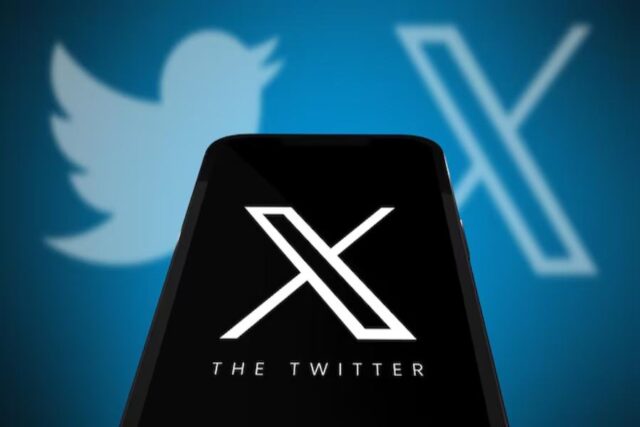In July 2023, Twitter underwent one of the most surprising brand overhauls in social media history. The iconic blue bird, once synonymous with online conversation, was replaced with a minimalist “X.” This move, spearheaded by Elon Musk, was both praised and criticized. It sparked debates among tech experts, users, and branding professionals, all asking the same question: why did Twitter change to X?
This article explores the motivations behind the rebranding, when it happened, how it reflects Musk’s broader ambitions, and what it means for the future of the platform. We’ll explore the timeline of the transition, strategic branding goals, public reception, and economic implications. Whether you’re a casual user or a digital strategist, understanding why did Twitter change to X helps illuminate the direction social platforms are taking in the Musk era.
Why did Twitter change to X?
Elon Musk rebranded Twitter to “X” as part of his vision to transform it into an all-in-one super app, integrating messaging, payments, and more. It aligns with Musk’s long-held ambition to create “X, the everything app,” and marks a shift away from Twitter’s original identity as a microblogging site.
Why Did Twitter Change to X? Musk’s Rebranding Vision Unpacked
The transformation of Twitter into X represents Elon Musk’s broader vision for the future of digital platforms. Known for his affinity with the letter “X”—from his early venture X.com (which later evolved into PayPal) to SpaceX and X.ai—Musk sees X as a symbol of innovation, minimalism, and futuristic ambition. His objective is to develop an all-encompassing “everything app,” akin to China’s WeChat, where users can interact socially, shop online, transfer money, and even handle daily transactions all within a single ecosystem. In Musk’s view, the Twitter brand, tied to early internet culture and microblogging, no longer aligned with this forward-thinking mission.
Rebranding to X served as a clear departure from Twitter’s past and its former leadership, signaling a fresh chapter. Musk aimed to eliminate the constraints of the platform’s old identity and reposition it within his broader tech empire, which includes Tesla, SpaceX, and Neuralink. Much like platforms such as Fontli, which evolved to serve more niche, creative audiences, Musk’s X is designed to redefine how users engage with technology. While the move sparked controversy and nostalgia, it represents a growing trend where platforms aspire to be digital ecosystems, supporting not just communication but the full spectrum of modern life and commerce.
When Did Twitter Become X?
The shift from Twitter to X wasn’t just a name change—it was a complete reimagination of the platform’s identity. Elon Musk’s abrupt rollout marked a bold new chapter in the social media giant’s evolution.
The Initial Announcement and Timeline
The transformation from Twitter to X began in July 2023, when Elon Musk initiated the rebranding during a weekend of cryptic tweets. By July 23, 2023, the platform’s classic blue bird logo had been removed and replaced with a striking “X” emblem. This move marked the visual and symbolic beginning of the rebranding. The transition accelerated quickly; by August 2023, app store listings were updated to reflect the new identity, replacing the word “Twitter” entirely. By Q4 of 2023, internal communication, emails, and all corporate branding materials exclusively used the name “X.”
How the Rebrand Was Executed
The rollout of the new identity was both sudden and dramatic. Without prior notice or a staged transition, Twitter’s visual identity was stripped away within 24 hours. Both desktop and mobile platforms were simultaneously updated to feature the new logo and interface design. This no-warning launch created a shockwave across the user base, many of whom felt caught off guard.
Technical and Functional Shifts
Alongside the rebranding came a handful of technical changes. Twitter Blue, the platform’s subscription service, was renamed X Premium, aligning with Musk’s long-term product goals. Although the backend infrastructure largely remained unchanged, the user interface took on a dark, sleek, and futuristic aesthetic to match the new identity.
Market Reaction and User Response
The response from the public was deeply divided. Some users praised the boldness of the change and embraced the fresh identity. Others criticized the move, mourning the loss of one of the most recognizable and beloved brands in social media history. Confusion even led some to believe the platform had been hacked or acquired. Still, Musk stood firm, pushing forward with his vision for what X could become.
What Motivated the Twitter to X Rebrand?
Elon Musk’s decision to rebrand Twitter as X wasn’t a mere cosmetic update—it was a calculated move driven by strategic, ideological, and branding motivations. The change reflects Musk’s broader vision for transforming social media into a powerful, multifunctional digital ecosystem. Here are the key drivers behind this bold rebranding:
- Vision of a Super App: Musk has long expressed his desire to build an “everything app” similar to WeChat. The goal is to integrate messaging, social media, payments, e-commerce, and more into a single unified platform where users can manage every aspect of their digital lives.
- Desire to Break from Legacy: Musk saw Twitter’s prior structure, leadership, and branding as outdated and limiting. By renaming the platform, he effectively drew a line between the old and new, signaling a clean break from previous practices and ideologies.
- Unified Branding Across Musk’s Companies: The letter “X” has been a recurring theme in Musk’s ventures, such as SpaceX, X.ai, and X.com. Aligning Twitter with this naming convention strengthens brand synergy across his empire.
- Appeal to Tech Culture and Futurism: The abstract, minimalist “X” is sleek and forward-looking—an aesthetic that resonates with the tech-savvy, innovation-driven culture Musk wants to attract.
- Legal and Creative Flexibility: Owning the “X” brand gives Musk greater freedom to redefine its purpose and positioning without the baggage of Twitter’s historical identity.
How Has the Public Reacted to X?
The public response to Twitter’s rebranding as X has been deeply divided, with strong opinions emerging from both supporters and critics. While some users viewed the shift as a visionary move aligned with Elon Musk’s broader goals, others felt alienated by the sudden departure from one of the most iconic brands in tech history.
- Positive Reactions: Many users applauded the boldness of Musk’s decision, seeing it as a refreshing break from the status quo. The new minimalist design and futuristic identity resonated with younger, innovation-driven audiences. For those excited by the concept of an “everything app,” the rebrand sparked intrigue. Supporters viewed the move as the first step toward a platform that could eventually rival the likes of WeChat in terms of functionality and scope.
- Negative Reactions: On the other hand, a significant portion of users were unsettled by the abruptness of the change. The removal of the iconic blue bird, a symbol that had become synonymous with online dialogue, triggered a sense of loss. Critics argued that the Twitter brand had built immense cultural capital over the years, which was discarded without fully leveraging its value. Many felt the new name lacked the warmth and personality that Twitter had cultivated.
- Media and Expert Perspectives: Industry professionals were equally divided. Some marketers labeled the move a brilliant risk, while others warned it could be disastrous for brand loyalty. Branding experts emphasized that Twitter’s name had been valued in the billions, making the switch to X a gamble. Tech analysts, however, saw the rebrand as a radical but coherent step in Musk’s broader vision to revolutionize digital platforms.
Economic Impact of Rebranding Twitter to X
The rebranding of Twitter to X didn’t just spark conversations—it had measurable financial consequences. From brand equity losses to shifts in revenue streams, the economic ripple effects were immediate and complex.
Market Value and Brand Equity Loss
The rebranding of Twitter to X had a significant economic impact, especially in terms of brand value. Branding experts estimated that Twitter may have lost between $4 billion to $20 billion in equity due to the abrupt abandonment of its globally recognized identity. The Twitter name and logo carried immense cultural and financial weight, built over nearly two decades of dominance in the social media landscape. Elon Musk, however, maintained that the long-term economic potential of X far surpasses the value left behind. He emphasized that the rebrand was necessary to support the platform’s new direction and business goals.
Revenue Changes and New Business Models
The transition also affected revenue streams, particularly with the evolution of Twitter Blue into X Premium. Musk’s vision placed greater focus on direct monetization through subscriptions, creator earnings, and enterprise-grade tools. While ad revenue dipped immediately following the rebrand, largely due to advertiser uncertainty, it began recovering by early 2024 as the platform stabilized and rolled out clearer monetization strategies.
Investor Reactions and Future Speculation
Investor response has been mixed. Some see the rebrand as a daring but visionary move that positions X as a future tech powerhouse. Others worry that the shift risks alienating Twitter’s original user base. Still, speculation around integrations with Tesla, SpaceX, and AI ventures continues to drive long-term optimism.
In Summery
The question why did Twitter change to X goes beyond branding. It encapsulates a shift in vision, functionality, and market identity. Elon Musk’s transformation of Twitter into X reflects his ambition to reshape the social media landscape entirely. While many lament the loss of the bird logo, others see this as the next evolutionary leap in how we engage online.
Whether X will succeed depends on its ability to win user trust, deliver promised features, and stand apart from competitors. One thing is certain: social media will never look the same again.
FAQ’s
Why did Twitter change to X?
Elon Musk rebranded Twitter to X as part of his long-term vision to transform the platform into an all-in-one digital ecosystem. This move marked a shift from simple microblogging to offering a range of integrated services like payments, messaging, and commerce.
When did Twitter become X?
The rebranding officially began in July 2023 when the “X” logo replaced the blue bird, and by the fourth quarter of 2023, the transformation was fully rolled out across all platforms, branding materials, and mobile apps.
Who owns X (formerly Twitter)?
X is privately owned by Elon Musk, who acquired Twitter in 2022. Under his leadership, the platform was completely reimagined and rebranded to reflect his broader business and technological ambitions.
What does the X logo represent?
The “X” symbolizes Elon Musk’s long-standing affinity for futuristic, minimalist design and represents his goal of building a comprehensive platform that mirrors the functionality of apps like WeChat or PayPal.
Will Twitter’s features change under X?
Yes, under the new identity of X, the platform is expected to evolve significantly by introducing advanced features such as in-app payments, video hosting, long-form content, and more interactive user tools.














